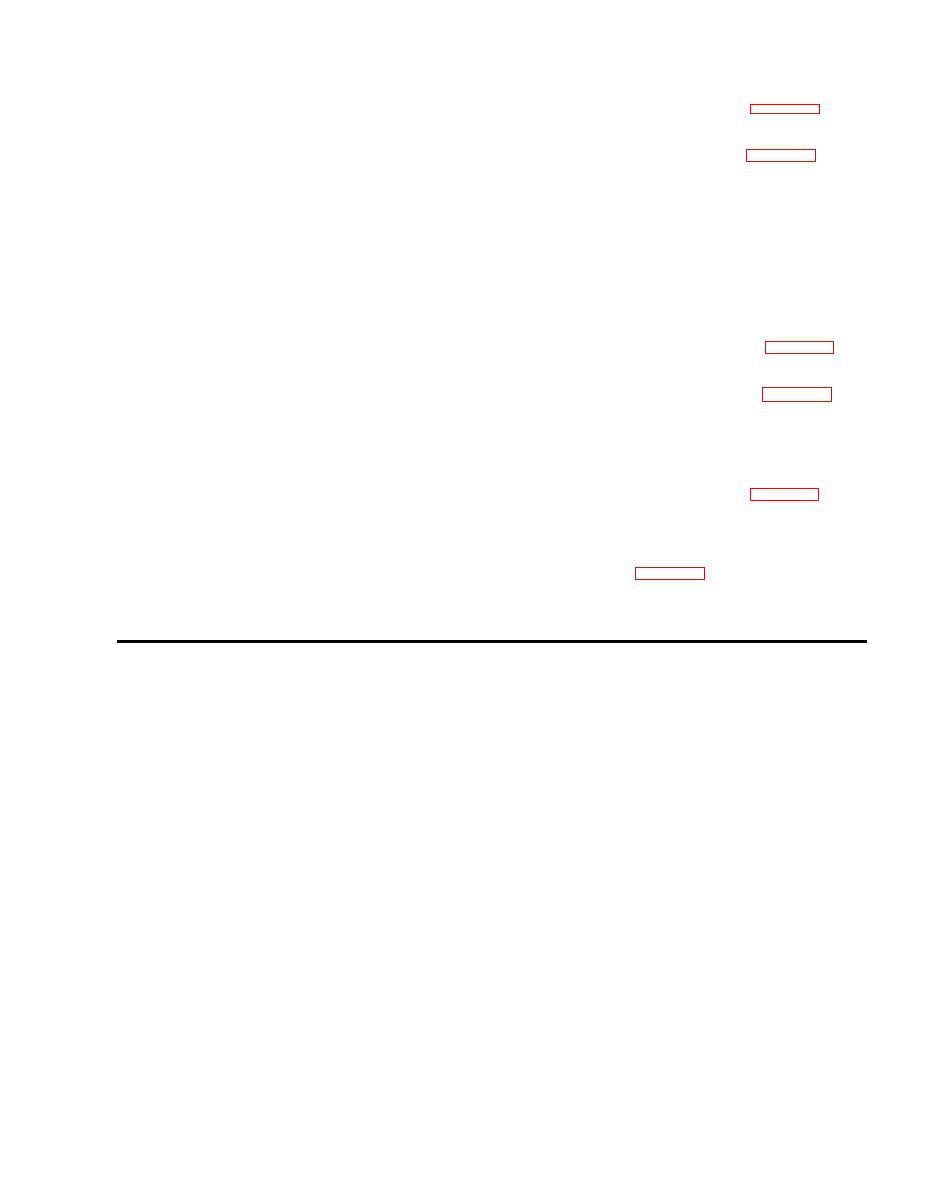 |
|||
|
|
|||
|
Page Title:
Section IV. REMOVAL AND REPLACEMENT |
|
||
| ||||||||||
|
|  TM 11-5821-277-20
Trouble symptom
Probable trouble
Checks and correctlve measures
Item No.
Transceiver squelch control not ad-
Replace transcei
Excessive noise in headset
11
ver
during periods of no signal
justed properly.
reception.
Audio signals are distorted,
a. Transceiver defective ------------------
12
Replace transceiver (para 4-17).
or contain excessive hum.
b. Connect headset and microphone di-
b. Aircraft Cl61lD/AIC defective __
rectly to transceiver PHONE and
MIKE jacks and operate radio act.
If distortion or excessive hum is no
longer present, trouble is isolated to
C-1611D/AIC. Refer C-1611D/AIC
to higher category maintenance for
repair.
c. Audio cables defective, or shield
Request higher category maintenance
C.
check of audio cabling.
not properly grounded.
13
Radio set operates on some
a. Control unit defective . . . . . . . . . .
frequencies but not on
others.
b. Replace transceiver (para 4-17).
b. Transceiver defective ------------------------
a. Replace transceiver (para 417).
Reception and transmission
a. Transceiver defective ---------- - - - - - - - - -
14
very weak
b. Request higher category maintenance
check of antenna and associated rf
necting cabling defective.
cabling.
Replace control unit (para 4-16).
VOL control defective . ---------------
15
Operation of Control Unit
VOL control does not
change received audio sig-
nal.
16
Worn or damaged resilient mount(s)
Replace resilient mounts as necessary
Mounting does not operate
smoothIy or provide speci-
fied limits of travel to
protect transceiver from
shock and vibration.
Section IV. REMOVAL AND REPLACEMENT
4-14. Control Unit Panel Lamp
4-15. Control Unit Control Knobs
a. The MHz timing control knob and the OFF-
WARNING
PWR switch are on the same mounting shaft, and
Be sure that the 27.5-volt dc circuit
the VOL. control knob and the kHz tuning c o n -
breaker that supplies power to the radio
trol knob are on the same mounting shaft ( f i g .
set is deenergized before performing the
3 - 1 ) ; however, each of the knobs is a separate,
procedures given below.
i n d e p e n d e n t section. When replacing the r e a r
sections, it is necessary to first remove the associ-
NOTE
ated tuning control knob.
Check to see that the washer and rubber ring re-
b. Perfor-m the procedures given below when
m a i n in place on the lampholder during removal
removing and replacing the control knobs.
procedures.
CAUTION
a. Unscrew
the
defective
lampholder
from
the
When replacing a rear section knob,
panel.
check to see that it does not drag or
b . Remove the defective l a m p from holder
bind against the front panel of the con-
w i t h a sharp-bladed instrument to separate the
trol unit after the setscrews that hold it
base of the lamp from the holder,
in place have been tightened. Also check
c. Insert a new lamp firmly into the holder.
to see that the front knob does not bind
or drag against the rear knob after the
d. Screw the lampholder
into the front
firmly
setscrews have been tightened.
panel of the control unit.
4-9
|
|
Privacy Statement - Press Release - Copyright Information. - Contact Us |